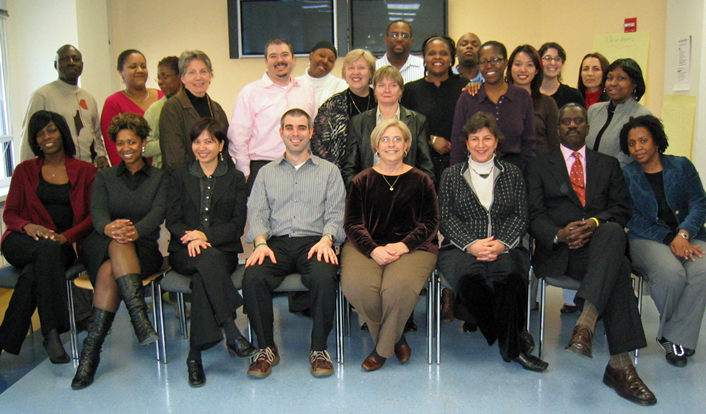On June 6, the Labor Management Project (LMP) celebrated its 20th anniversary. The following is part one of a series on how we got started and what we’ve accomplished together over the years.
In the 1990s, the healthcare industry was in a state of upheaval. Many hospitals were restructuring, competition was increasing, and managed care was expanding. Analysts predicted significant loss of jobs in New York City’s hospital workforce. Direct patient care workers and support staff such as patient care technicians, food service workers and housekeepers were particularly vulnerable as hospitals were merging and consolidating. Management was seeking innovative ways to save money and increase revenue. These changes laid the groundwork for creating a program focused on helping labor and management work together to ensure that healthcare institutions could survive and thrive, while providing high-quality care and safeguarding jobs.
In 1994, the collective bargaining agreement between 1199SEIU and the League of Voluntary Hospitals and Homes of New York agreed to expand 1199’s Employment, Training, and Job Security Program to include the Planning and Placement Fund, which focused on developing a cost-effective employment service, researching job trends and industry changes, and facilitating labor-management partnerships. The agreement also committed to creating the Labor Management Project (LMP), which officially started in 1997. The LMP’s goals were to establish a consulting organization to initiate labor-management participation activity at hospital sites and to establish communication and education activities that would support labor management work.
Larry Fox served as LMP’s first director, under the leadership of Debby King, the 1199SEIU Training and Employment Fund’s executive director. Five staff—three union coordinators and two management coordinators—formed the initial team that provided support to labor and management at participating sites.
Sponsors included the League’s new director Bruce McIver and a Union-led restructuring committee with Union leaders George Gresham, Steve Kramer, Gerry Hudson and John Reid, who helped to develop goals and project work.
The Labor Management Project began with six “pilot” hospitals. Participating in this innovative endeavor were Beth Israel Medical Center, Brookdale University Hospital & Medical Center, Maimonides Medical Center, Montefiore Medical Center, North General Hospital and St. Luke’s-Roosevelt Hospital Center. The goals of the pilot projects were to explore labor-management collaboration as an alternative labor relations strategy, and to demonstrate its value as a means to address important operational changes.
Samantha Morales, now the LMP’s Development Manager, was one of the LMP’s first union coordinators. Morales says establishing these pilots was the LMP’s first major accomplishment. “We were happy. We developed Labor Management committees in all six sites. One of our goals was to increase the Union voice in these initiatives. We established Labor Management Councils at each hospital where senior hospital and Union leadership discussed strategic plans and how labor and management could further mutual goals.”
Stakeholders recognized that in the shifting healthcare context, worker voice and participation could pave the way to significant change.
At each site, various projects were developed to meet the unique needs of the organization. Examples of the projects undertaken included:
- Patient care and laboratory redesign
- Self-directed teams
- Conflict resolution training
- Establishing departmental labor management committees (for partnership activities and employee input at the departmental level)
- Grievance reduction through interest-based problem solving
- Joint interviewing and hiring of management leadership
- Reengineering, workflow redesign, and work system changes
- A violence-free workplace campaign
“During that time, our focus was the three R’s, which was reengineer, redesign and restructure,” says Morales. “We were focused on engaging in collaborative work at our hospitals to meet these challenges and opportunities.”
During these early years, the LMP established itself as a learning organization, constantly building and refining the organizational development skills of its staff in order to most effectively serve the needs of its stakeholders. This included review and analysis of case studies, site visits to the Saturn Corporation and Allina Health Systems to learn about effective labor and management collaboration, and use of various models to explore and understand team functioning. “We discovered that learning to develop ourselves as a team would give us the skills to develop other teams,” says Morales.
While the LMP started as a small project, in the past 20 years it has grown to serve over 40 hospitals, nursing homes, ambulatory care centers and community-based organizations. It now supports labor and management partners in improving the quality of patient care and employee satisfaction and addressing the financial viability of organizations through joint work. These are the mutual interests of Union and management, and the LMP continues to cultivate the partnerships needed to ensure successful attainment of these goals.
Stay tuned for part 2 of our story in the September issue of Partnership Matters.
Download a pdf of this article
